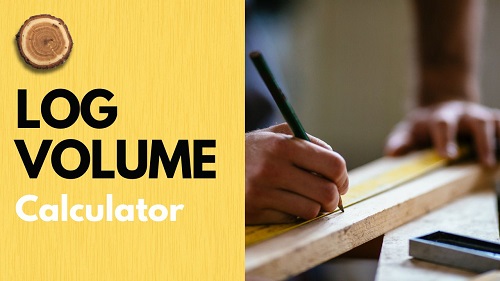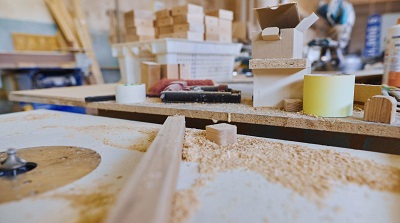In terms of landscaping or gardening projects, calculating the right amount of wood chips needed can be a daunting task.
You want to ensure you have enough to cover your desired area, but not so much that you’re left with excess material. That’s where a wood chip calculator comes in. With this handy tool, you’ll be able to accurately determine how much wood chip coverage you’ll need, taking into account factors like area size, depth, and even wood chip type.
By using a wood chip calculator, you’ll save time, money, and hassle, ensuring your project turns out exactly as planned.
What is a Wood Chip Calculator?
To accurately determine the amount of wood chips needed for your landscaping or gardening project, you’ll need a reliable tool.
This is where a wood chip calculator comes in – a handy online tool designed to simplify the process of calculating the required volume of wood chips.
Wood Chip Calculator
Definition and Purpose
What sets a wood chip calculator apart is its ability to provide an accurate estimate of the wood chips required, taking into account factors such as the area to be covered, desired depth, and type of wood chips. Its purpose is to ensure you order the right amount of wood chips, saving you time, money, and effort.
Importance in Landscaping and Gardening
On any landscaping or gardening project, having the right amount of wood chips is crucial. Without it, you risk facing delays, increased costs, and a subpar final result. A wood chip calculator helps you avoid these issues, ensuring your project stays on track and within budget.
Another significant benefit of using a wood chip calculator is that it allows you to plan your project more effectively. By knowing exactly how much wood chips you’ll need, you can schedule deliveries, allocate labor, and make informed decisions about your project’s timeline and resources. This level of precision gives you greater control over your project, enabling you to achieve the desired outcome with confidence.
How to Use a Wood Chip Calculator
Assuming you have chosen a reliable wood chip calculator, using it is a straightforward process. You’ll need to provide some basic information about your yard or garden, and the calculator will do the rest. With a few simple inputs, you’ll get an accurate estimate of the amount of wood chips you need to cover your area.
Measuring Your Yard or Garden
Gauging the size of your yard or garden is the first step in using a wood chip calculator. Take precise measurements of the length, width, and any irregular shapes to ensure an accurate calculation. Make sure to account for any obstacles, such as trees or gardens, that may affect the coverage area.
Calculating Wood Chip Coverage
Wood chip coverage is a critical factor in determining how much material you need. Enter the measurements from your yard or garden into the calculator, along with the desired depth of coverage, and it will calculate the total square footage and volume of wood chips required.
It’s necessary to note that the calculator will also take into account the density and type of wood chips you’re using, as these factors can significantly impact the overall coverage. By considering these variables, you’ll get a more accurate estimate and avoid over- or under-ordering wood chips for your project.
Factors Affecting Wood Chip Calculator Results
If you’re looking to get accurate results from your wood chip calculator, there are several factors you need to consider. These include the type and size of wood chips, moisture content and density, and the desired application. You’ll also need to think about the specific requirements of your project, such as the volume of wood chips needed and the equipment you’ll be using. Thou should take the time to carefully consider each of these factors to ensure you get the results you need.
Wood Chip Type and Size
Characteristics such as the type and size of wood chips play a significant role in determining the accuracy of your wood chip calculator results. You’ll need to consider the specific characteristics of your wood chips, including their length, width, and thickness, as well as the type of wood they’re made from.
Moisture Content and Density
One of the most critical factors affecting wood chip calculator results is the moisture content and density of the wood chips. You’ll need to consider the moisture level of your wood chips, as well as their density, to get an accurate calculation.
Density is a critical factor in determining the volume of wood chips you’ll need for your project. Wood chips with a higher density will take up less space than those with a lower density, so it’s crucial to get an accurate measurement of density to ensure you have enough wood chips on hand. By considering the density of your wood chips, you can avoid running out mid-project and ensure you have the resources you need to complete the job successfully.
Benefits of Using a Wood Chip Calculator
Not only will a wood chip calculator make your life easier, but it will also provide you with numerous benefits that will take your project to the next level. By using a reliable calculator, you can ensure that your project is completed efficiently, effectively, and within budget.
Accurate Estimates and Budgeting
Balancing your budget is crucial when it comes to any project, and a wood chip calculator helps you do just that. With accurate estimates, you can allocate your resources wisely, avoiding costly mistakes and ensuring that your project stays on track financially.
Time-Saving and Efficient Planning
Calculator in hand, you’ll be able to plan your project with precision and speed. No more tedious calculations or guesswork – a wood chip calculator streamlines the process, saving you valuable time and energy.
Estimates generated by a wood chip calculator allow you to plan your project’s logistics with ease. You’ll know exactly how much material you need, when to schedule deliveries, and how to allocate your workforce. This means you can focus on the actual work, rather than getting bogged down in calculations and planning.
Common Mistakes to Avoid
After calculating the amount of wood chips you need, it’s vital to ensure you’re using accurate information to get the right quantity. However, there are common mistakes that can lead to incorrect calculations, wasting your time and resources. By being aware of these mistakes, you can avoid them and get the perfect amount of wood chips for your project.
Incorrect Measurements
Avoid taking sloppy measurements, as they can significantly affect the accuracy of your wood chip calculation. Make sure to measure your area carefully, taking into account any obstacles or irregular shapes. Double-check your calculations to ensure you’re using the correct units and formulas.
Ignoring Wood Chip Type and Size
An often-overlooked factor in wood chip calculations is the type and size of the chips. Different types of wood chips have varying densities and volumes, which can greatly impact the amount you need.
Incorrect assumptions about wood chip type and size can lead to inadequate coverage or excessive waste. For instance, if you’re using large wood chips, you’ll need fewer cubic feet than if you were using smaller chips. Consider the specific type and size of wood chips you’re using and adjust your calculation accordingly to get an accurate estimate.
Advanced Tips and Tricks
Once again, to get the most accurate results from your wood chip calculator, it’s necessary to consider a few advanced factors that can affect your calculations. Here are some key considerations to keep in mind:
- Moisture content: Wood chips with high moisture content will take up more space than dry wood chips.
- Density: Different types of wood have varying densities, which can impact the volume of wood chips.
| Wood Type | Density (kg/m³) |
|---|---|
| Oak | 750-900 |
| Pine | 350-450 |
Accounting for Slopes and Curves
With irregularly shaped areas, you’ll need to adjust your calculations to account for slopes and curves. This can be done by breaking down the area into smaller, more manageable sections and calculating the volume of wood chips needed for each section separately.
Using Multiple Calculators for Large Areas
Slopes and curves aren’t the only challenges you may face when calculating wood chip needs. Large areas can also require special consideration.
Accounting for large areas requires a different approach. Instead of using a single calculator, you may need to use multiple calculators to break down the area into smaller sections. This will give you a more accurate estimate of the total volume of wood chips needed. By doing so, you’ll be able to ensure that you have enough wood chips to cover the entire area, without wasting resources or underestimating your needs.
Summing up
Presently, you have a comprehensive understanding of the wood chip calculator, a valuable tool for estimating the amount of wood chips needed for your projects. By utilizing this calculator, you can accurately determine the required quantity, saving you time and resources. With your newfound knowledge, you can confidently tackle various projects, from landscaping to construction, knowing that you have the right amount of wood chips to get the job done efficiently.








